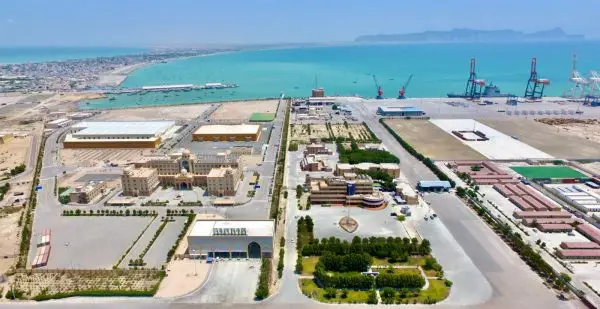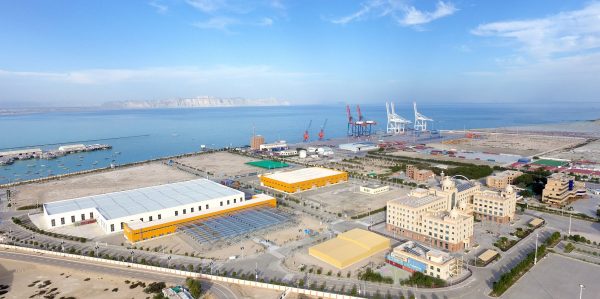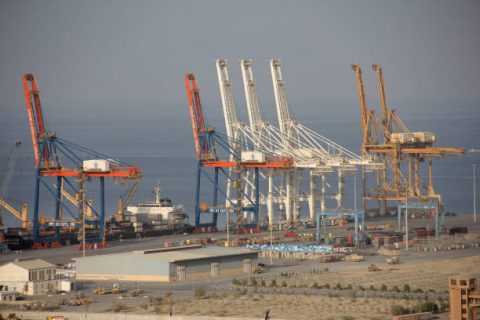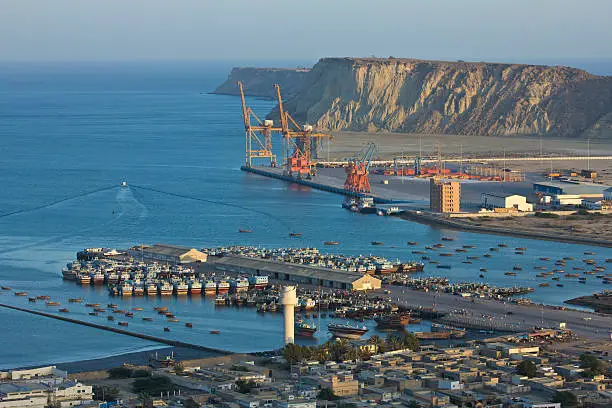The Eastbay Expressway of Gwadar Port, the construction of which was aided by the government of China, has been inaugurated in Gwadar city of Pakistan’s southwest Balochistan province.
Developed under the China-Pakistan Economic Corridor (CPEC), the project was officially started in 2017 by the China Communications Construction Company, Ltd. (CCCC), a multinational engineering and construction company primarily engaged in the design, construction and operation of infrastructure assets, such as highways, bridges, tunnels, railways (especially high-speed rail), subways, airports, oil platforms, and marine ports.
Speaking at the inauguration ceremony, Pakistani Prime Minister Shahbaz Sharif thanked China for the grant and explained that the west Asian country has built a very high-quality expressway that will link Gwadar port to the coastal highway ahead. According to Sharif the Eastbay Expressway will enhance connectivity and help the transportation of goods from the port all the way to the country’s southern port city of Karachi in the future.
50-megawatt independent power plant to be constructed at Gwadar port
Meanwhile, a proposal to install a 50-megawatt independent power plant in collaboration with Chinese power producers in Gwadar port is likely to be floated in a crucial meeting between the government and Chinese companies.
This came to light following the electricity shortage in Gwadar that remained atop during Prime Minister Shehbaz Sharif’s visit to the port city. Reportedly, long- and short-term proposals from the PM’s side and from China Overseas Port Holding Company (COPHC) will also represent other Chinese enterprises, have been laid down and the meeting will green-light the prompt course of action to fix the electricity issues.
Gwadar Port Overview
The Gwadar port is situated on the Arabian Sea in Gwadar Pakistan, controlled by the Maritime Secretary of Pakistan and under the operational control of China Overseas Port Holding Company. The port is a main feature in the China–Pakistan Economic Corridor (CPEC) plan and is set to be the link between the Belt and Road Initiative and the Maritime Silk Road schemes. It is around 170 kilometres to the east of Chabahar Port 120 kilometres southwest of Turbat.
The Gwadar Port is under two-phase development with the first phase covering the building of three multipurpose berths, related port infrastructure and port handling equipment. This phase was completed in December 2006 but inaugurated later on 20 March 2007.
Read also: The Great Hall Project in Denver International Airport.
Phase II development.
The second phase of development is currently ongoing as part of the China-Pakistan Economic Corridor plan and other ancillary schemes. The completed project is set to cost $1.02 billion.
Under the CPEC plan, China Overseas Port Holding Company (COPHC) will construct new nine multipurpose berths on a 3.2 kilometres seafront in the east of the existing multipurpose berths. Cargo terminals will also be constructed in the north and northwest of the site 12 kilometres along the shoreline of the Demi Zirr bay.

COPHC has awarded contracts worth $1.02 billion for the expansion of the port. Plans for expanded port infrastructure will also comprise several schemes that will be funded by loans from the Chinese state-owned banks. The dredging project at Gwadar Port will deepen approach channels to 14 meters depth from the previous 11.5-meter, the work costing $27 million. This will help docking of huge ships with a deadweight tonnage of up to 70,000 from the current maximum capacity of 20,000 DWT. The Future plan call for dredging to 20 meters to allow docking for even larger vessels. Also in the plan is a $130 million breakwater around the port.
A desalination plant will be developed at $114 million to offer potable water to the city, while the Pakistan Government will deliver $35 million to the infrastructure projects around the Gwadar Special Economic Zone. A dual carriageway, 19 kilometre-long dubbed the Gwadar East Bay Expressway will also be constructed at a cost of $140 million to join Gwadar Port with the existing Makran Coastal Highway and the $230 million Gwadar International Airport.
A floating liquefied natural gas facility with a daily capacity of 500 million cubic feet will also be constructed at the port. The facility will be part of the Gwadar-Nawabshah $2.5 billion segments of the Iran and Pakistan gas pipeline being delivered on a joint venture between the China National Petroleum Corporation and Pakistan’s Inter-State Gas System.

Reported earlier
2002–2006
The first phase of Gwadar Port construction started in 2002 until 2006 when it was completed and inaugurated in 2007.
2015
It was revealed that the port and city would be developed further under the CPEC at a $1.62 billion cost for the purpose of linking western China and northern Pakistan to the deep water seaport. Later in the year, China acquired the port on a 43 years lease, until 2059.

2016
Construction started in June on the Gwadar Special Economic Zone, being developed in a 2,292-acre area next to Gwadar port.
2018
In September, the Pakistan Senate conveyed their concern at the slow rate of development of Phase II projects at Gwadar as many had not started construction.
2020
In January, Pakistan engaged Gwadar Port in the Afghan transit trade.
2021
An implementation agreement on the Chinese government’s assistance in the building of a desalination plant was also signed. With construction ongoing, 100 berths will be built by 2045 and have a capacity to control 400 million tons of cargo annually.
December 2021
China and Pakistan resolved to redouble their attempt to tap the full potential of the Gwadar port and free zone, making sure that the local population benefits fully from the scheme. One of the meetings expressed the demand to finalise the Marketing and Investment ambitions for Free Zone together with its implementation strategy. The plan was to be presented to China-Pakistan Economic Corridor (CPEC) Cabinet Committee for consideration.
They all indicated satisfaction over good progress made on different projects, including the full operationalisation at the Gwadar Port and the Afghan Transit Trade route inclusion; the Pak-China Technical and Vocational Institute completion; finalisation of the Master Plan at Smart Port City; notable Eastbay Expressway progress; work commencement on Pakistan-China Friendship Hospital and the New Gwadar International Airport.
It was also noted that the scheme called Gwadar Free Zone Phase-1 was successfully completed, with work on going on the larger second Phase, with an area of 2,221 acres.
